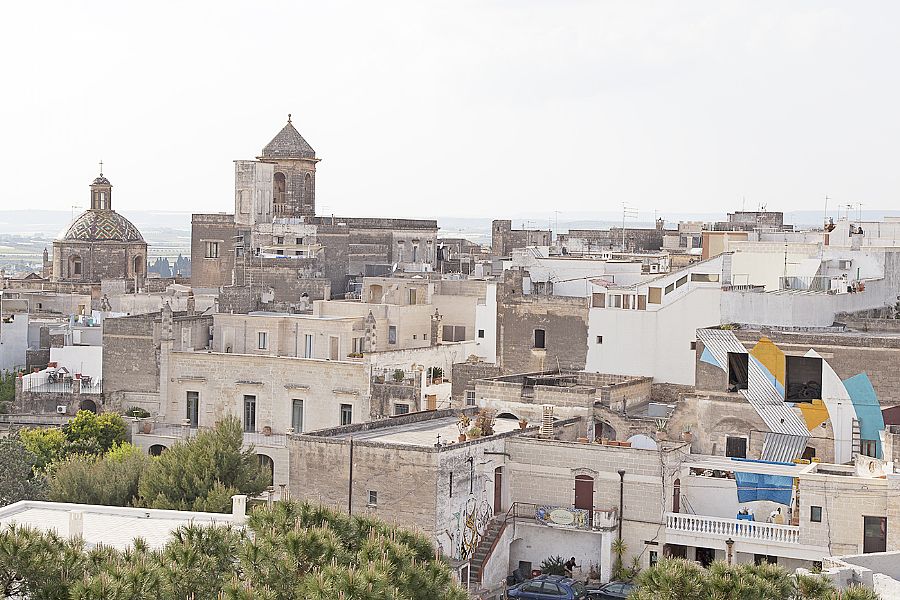Grottaglie

Amidst the low hills and limestone ravines of northern Puglia, Grottaglie stands out for its dedication to its historic craft - ceramics. The town is named for the caves that litter the hills and ravines, deriving from "grottoes". Those natural caves gave refuge to the population during Saracen raids and other perils.
The middle ages brought prestige to the town, when it became a well-known center of ceramic industry. The Normans donated the territory to the Archbishop of Taranto, who maintained the area as feudal lands for centuries. They enriched the town with palaces and churches, fortified with protective walls and a defensive castle, and embellished it all with baroque adornments. There are several lovely palazzi and churches to see. Don't miss the "chiesa madre" dedicated to SAnta Maria Annunziata, built in the 1370s in Pugia Romanesque style, capped by a ceramic-studded dome. You'll also want to see the rich and refined riot of painting in the sanctuary called "la Muttata" a few kilometers outside town. We won't ruin the surprise of it; you have to walk inside and be amazed by the beauty. The Chiesa del Carmine is worth a visit, as well, especially to see the incredible stone-carved painted nativity scene dating to 1530 by artist Stefano di Putignano, placed (of course) in a grotto setting (also hand carved).
A highlight is the sprawling monastic complex at the edge of town dedicated to San Francesco di Paola. The church and convent date to the 1400s and are still operated by the Order of the Minims. (The "minimi" order, of St. Francis of Paola, were "the least of all the faithful", dedicated to humility, chastity, poverty and obedience.) The "mendicant friars" lived a monastic life in the hermitage, dedicating themselves to prayer. They followed the example of St. Francis of Assisi, for whom St. Francis of Paola was named, and he emulated his mentor, following his example. The small chapel and humble cells of the hermitage eventually grew and expanded to become the complex you see today. The cloister is lovely and its arcades are decorated with frescoes.
There is a nice art gallery in the Palazzo de Felice, and a museum dedicated to the town's most important industry, ceramics, located in the Castello Episcopio. The castle was the archbishop's residence. There are many ceramics manufacturers and shops to visit and see how the classic craft is made; in fact, there is an entire area, called the quartiere delle ceramiche.
And while Grottaglie is called "citta della ceramica" it is also called "citta' dell'uva" (of the grape), so you'll want to taste some of the table grapes and of course the wines that they make, from Primitivo, Negroamaro, Fiano and other varietals.
Grottaglie is located between Taranto and Brinidisi, not far from Ceglie Messapica.
Explore handpicked holiday lettings in Puglia.

 Amalfi Coast
Amalfi Coast Sorrento Coast
Sorrento Coast Tuscany
Tuscany Cilento National Park
Cilento National Park Lake Como
Lake Como Rome and Latium
Rome and Latium Umbria
Umbria Capri and Ischia
Capri and Ischia Venice
Venice Puglia (Apulia)
Puglia (Apulia) Liguria
Liguria Sicily
Sicily Lake Maggiore
Lake Maggiore Lombardy
Lombardy Sardinia
Sardinia Lake Garda
Lake Garda Abruzzo and Marche
Abruzzo and Marche Calabria
Calabria


Been there? Done that? Share your experience and tips!
Haven't visited yet? Have questions about Grottaglie? Ask them here!